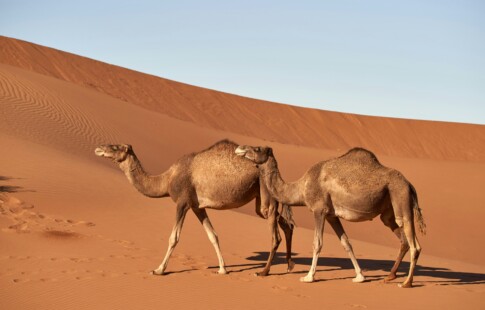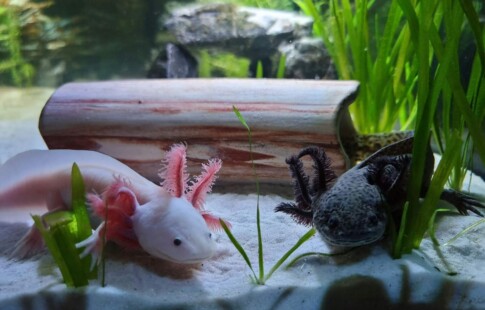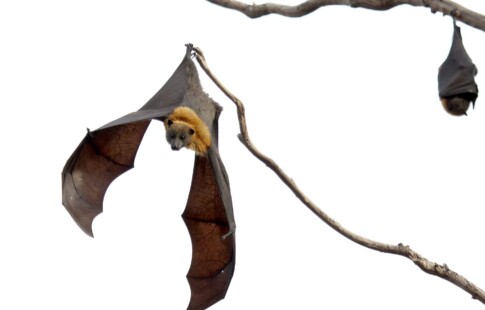
Humpback Whales vs. Orcas: Is There Empathy Among Wildlife?
We are reader-supported. When you buy through links on our site, we may earn affiliate commission.
Scientists are observing humpback whale behavior that might be empathetic.
Never become complacent in thinking you know everything there is to know about our planet. Inevitably, something will happen to make you realize you don’t know as much as you thought you did. Besides, that’s one of the great things about our world: learning new and interesting things about it.
Humans are the most advanced species on the planet. As such, we believe that all other animals, while possessing survival intelligence, can’t match our wit and reasoning capabilities. These traits certainly set us apart from other animals. However, scientists are learning that animals might have more adaptations than we originally believed. One of these might even be empathy among wildlife.
Empathy and Wildlife
Empathy is the ability to recognize and share feelings with others. It gives humans the ability to experience emotions and situations from another person’s perspective. We can put ourselves in their place and feel their emotions. Empathy is believed to be a socially learned behavior, and it helps humans have better relationships with other humans.
However, observations in the wild have made scientists and researchers question what they know about animal interactions and behavior. This is particularly true for interactions between humpback whales and orcas. There have been many situations where a humpback whale will come to the defense of another species that is being attacked by orcas — an action that is almost completely unheard of in the animal world.
Humpback Whales vs. Orcas
Humpback whales are amazing creatures. They are intelligent, they have the ability to communicate with one another and they have problem-solving and decision-making skills. In the communication department, each humpback population has its own dialect. Calves must learn how to sing because they aren’t born with the knowledge. This means they have the capacity to learn and teach.
Since the 1950s, there have been 115 reports of humpback whales interacting with orcas (killer whales), and 89 percent of the incidents were not to protect one of their own species. Humpback whales have come to the aid of gray whales, seals and sunfish.
Scientists are unsure exactly why humpback whales would exhibit this type of behavior, especially since it could result in injury or death. Animals often act on instinct and are driven by survival, which means they will stay out of situations that could get them seriously injured. Not all humpback whales participate in killer whale attacks, but the fact that some do is intriguing.
Whales have an advantage in size when it comes to defending other animals against orcas. Humpbacks top out at 50 feet in length, while orcas can grow to 31 feet. However, orcas often hunt in packs, which could spell disaster for a lone humpback, but that hasn’t stopped one humpback whale from making a stand. If the humpbacks work together, they have that much more force and mass against a pod of orcas. But mass is nothing against weapons, and orcas have teeth, while humpbacks only have baleen. That fact still hasn’t stopped some humpbacks from facing off against orcas.
Deciphering Humpback Whale’s Actions
There are arguments that the reason humpbacks engage killer whales during attacks is because they’ve evolved with a behavioral rule that tells them they must break up orca whale attacks. This could have been imprinted on them when they were young because they had been attacked or passed down through their genes. It’s possible the humpback doesn’t realize it’s saving another species until it gets to the scene. It might just be acting on ingrained instincts.
Others argue that the whales are exhibiting empathy. As scientists and researchers learn new things about wildlife, some believe that empathy among wildlife is a possibility. The willingness to help others in need can be found in chimpanzees and young children. The researchers claim that empathy can’t be a learned trait because chimpanzees and young children haven’t been taught these lessons. Therefore, it must be a trait that occurs naturally, which would explain why other animals exhibit empathy.
Other animals that exhibit compassion or empathy include dolphins helping out stranded dogs and humans. Elephants seem to mourn their dead, and they often have tight-knit herds that work together to protect each other and their young.
However, despite the observations, scientists caution that we shouldn’t attribute too many human characteristics to the humpback whales’ actions. After all, they are still animals and haven’t evolved in the same way humans have. It is argued that humpback whales are actually being incredibly selfish when they rush in to defend others against an orca attack.
If the goal of a species is to propagate and pass their genes through the generations, they have to ensure that the young survive. Killer whales target and kill humpback whale calves for food. The adults in the humpback group defend their young to keep them safe. It’s possible that by coming to the aid of another species, they are showing force to the killer whales that they shouldn’t be messed with. It seems like an incredibly heroic and empathetic gesture to aid another species, but it’s possible the humpbacks do it to discourage attacks on their young.
The Surprising Natural World With Empathy Among Wildlife
We don’t have an answer as to why humpback whales come to the aid of other species when they are being attacked by orcas, but we know that it happens. Whether it’s because of selfish reasons or because it’s an act that’s been hardwired into the animal’s genes, it has been documented as occurring over several decades in the wild.
If nothing else, the act shows us that perhaps we don’t understand the world as we thought we did. It continues to surprise and impress us. Perhaps one day we will find the answer to this question, but we may not. Perhaps nature will continue to shock us with new animal behaviors and actions.
The only way to truly appreciate our world and the creatures living in it is to see them thriving and surviving in their natural habitats. As our population continues to grow and we expand into previously uninhabited parts of the world, we encroach into many species’ habitats. When this happens, we either drive the species out or change their world in detrimental ways, including killing the animals.
By understanding the animal world, it gives us insight into our own. We’ve already learned so much about different species, yet we continue to discover new things. We live in a crazy, beautiful world that continues to reveal new and exciting secrets about its animal kingdom. If we want to find the answers to these new questions and discover even more revelations about whether there is empathy among wildlife, we need to find a way to live in peace and harmony with all of the world’s creatures.
Have your own ideas, comments or questions about conservation or environmental awareness? Contact me so we can work together to make the world a better place to live.
Share on
Like what you read? Join other Environment.co readers!
Get the latest updates on our planet by subscribing to the Environment.co newsletter!
About the author

Jane Marsh
Starting from an early age, Jane Marsh loved all animals and became a budding environmentalist. Now, Jane works as the Editor-in-Chief of Environment.co where she covers topics related to climate policy, renewable energy, the food industry, and more.





